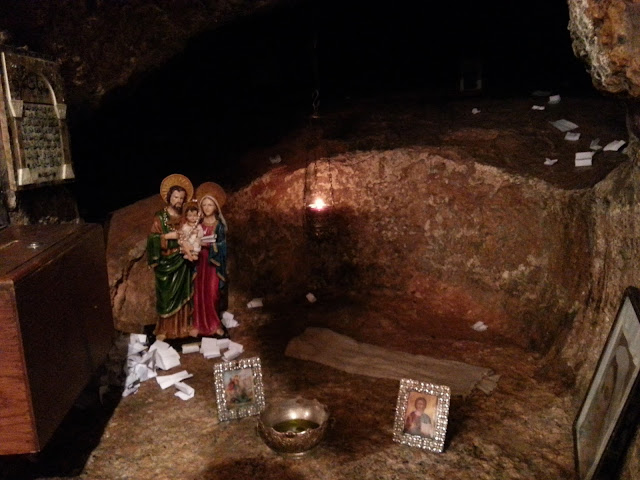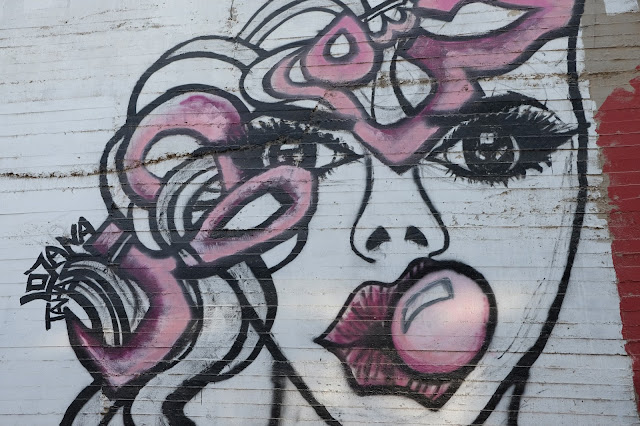Touristing like a Salti
Last Saturday, we headed to the old capital of Transjordan, As-Salt, for a day trip with a group of expats. Located on the old road between Amman and Jerusalem, the city provides a more real insight about Jordan.
Unlike Amman, As-Salt is not full of expats dominating the main scene. This is a town where the main commercial street, Hammam Street, is crowded by sellers with their stalls full of vegetables and fruits, not by pretentious youngsters in their expensive cars strolling along (as they do on Rainbow Street, Amman every Thursday night).
Our tour started with the "Historic Old Salt Museum" which showcases an anthropological side to the city, including the 3-meter long traditional women's dress made up of cotton called "khalaqa". Having worn long trousers for the trip as we were warned not to wear shorts and tank tops because "it is a conservative city", I wondered how heavy a woman might feel under that huge chunk of cloth.
It was again the museum where we learned that As-Salt is famous for its secondary school which graduated six kids so far who ended up being a prime minister for the country.
After the museum came the English Evangelical Hospital Complex which served as the city's first hospital but it is not functioning any more. Yet it feels good to see churches so close to mosques, not hiding, from the beautiful yard of the complex.
For me the highlight of As-Salt has been the Al-Khader Church built in 1682. As I am familiar with the story of Prophet Khader helping people as quickly as they call for him, it felt more than just another church. What's more, the fact that any Muslim can come up with a prayer rug and pray according to their faith right in the church is just fantastic. That's the scene we need to see more, not some idiots killing each other in the name of God. After all, religion is all about unity and love, bithces! (Amen!)
Well, getting hungry? We had a lovely lunch (filled with maglobah -the upside-down dish- and mansaf) at the house of Umm Muhammad ("mother of Mohammad" as people use such nicknames for themselves in the Arab world). She was a great hostess, serving us with three cups of Arabic coffee as a symbol of friendship and solidarity and straightforwardly taking our pictures as we stood in a line (or a curve around the buffet) to fill our dishes. The dessert was dressing a couple in traditional Salti clothing, making it probably the most touristy point of the whole trip.
This is called community-based tourism. Involving locals in a place, not just like a staff in a hotel but turning them into the direct communicators of their own culture, has been the most precious part of our trip. That's what made us feel that next time we visit the city, there might be some familiar faces popping up in Hammam Street. Remember your line ahead of time: Ahlan wa sahlan!
20.04.2016
Unlike Amman, As-Salt is not full of expats dominating the main scene. This is a town where the main commercial street, Hammam Street, is crowded by sellers with their stalls full of vegetables and fruits, not by pretentious youngsters in their expensive cars strolling along (as they do on Rainbow Street, Amman every Thursday night).
Our tour started with the "Historic Old Salt Museum" which showcases an anthropological side to the city, including the 3-meter long traditional women's dress made up of cotton called "khalaqa". Having worn long trousers for the trip as we were warned not to wear shorts and tank tops because "it is a conservative city", I wondered how heavy a woman might feel under that huge chunk of cloth.
It was again the museum where we learned that As-Salt is famous for its secondary school which graduated six kids so far who ended up being a prime minister for the country.
After the museum came the English Evangelical Hospital Complex which served as the city's first hospital but it is not functioning any more. Yet it feels good to see churches so close to mosques, not hiding, from the beautiful yard of the complex.
For me the highlight of As-Salt has been the Al-Khader Church built in 1682. As I am familiar with the story of Prophet Khader helping people as quickly as they call for him, it felt more than just another church. What's more, the fact that any Muslim can come up with a prayer rug and pray according to their faith right in the church is just fantastic. That's the scene we need to see more, not some idiots killing each other in the name of God. After all, religion is all about unity and love, bithces! (Amen!)
In a piece of paper, Al-Khader allows us to take a moment to think about
what we truly need for ourselves and our loved ones.
Well, getting hungry? We had a lovely lunch (filled with maglobah -the upside-down dish- and mansaf) at the house of Umm Muhammad ("mother of Mohammad" as people use such nicknames for themselves in the Arab world). She was a great hostess, serving us with three cups of Arabic coffee as a symbol of friendship and solidarity and straightforwardly taking our pictures as we stood in a line (or a curve around the buffet) to fill our dishes. The dessert was dressing a couple in traditional Salti clothing, making it probably the most touristy point of the whole trip.
This is called community-based tourism. Involving locals in a place, not just like a staff in a hotel but turning them into the direct communicators of their own culture, has been the most precious part of our trip. That's what made us feel that next time we visit the city, there might be some familiar faces popping up in Hammam Street. Remember your line ahead of time: Ahlan wa sahlan!
20.04.2016



